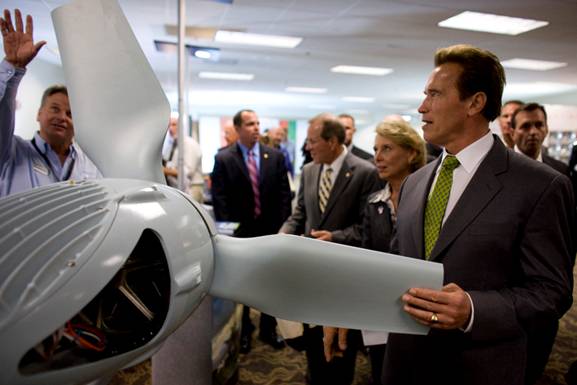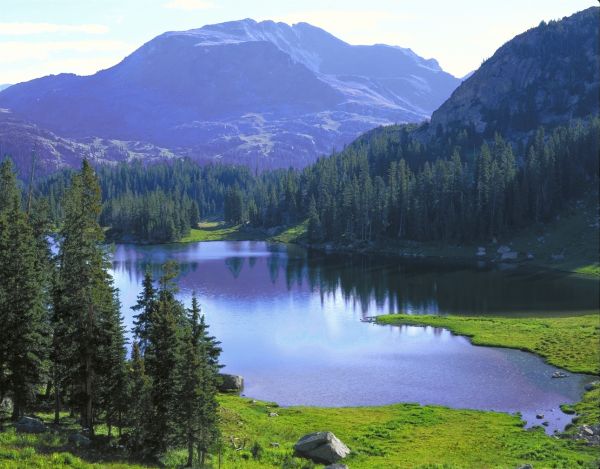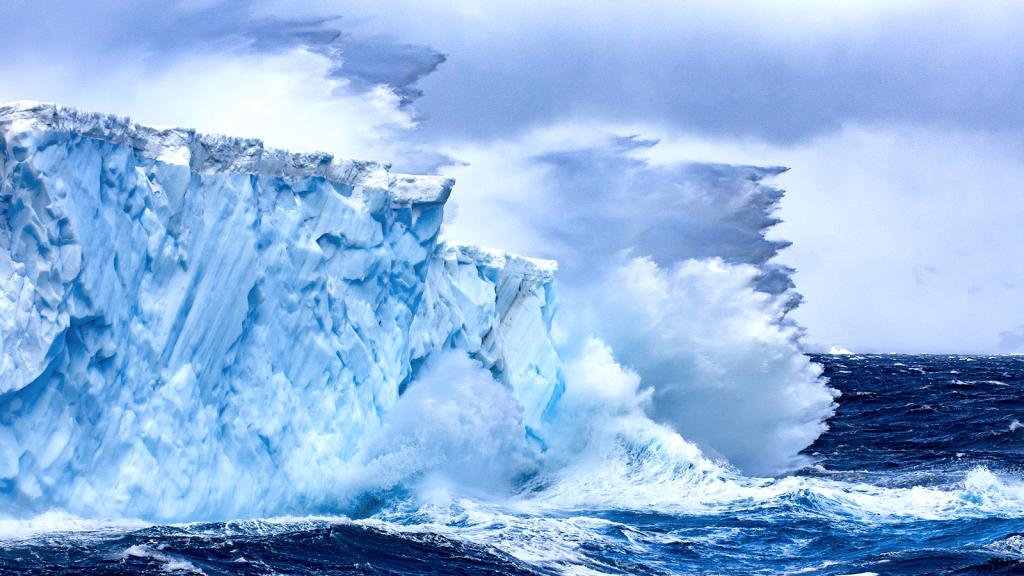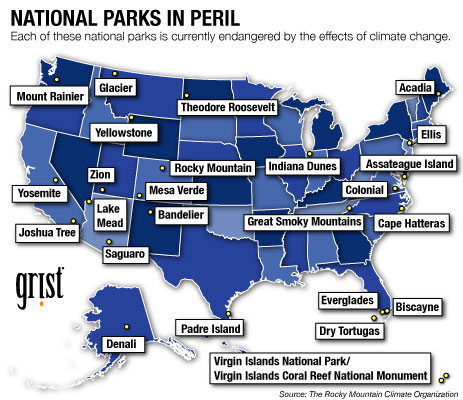 Tonya Ricks for Grist
Tonya Ricks for Grist
- Mount Rainier National Park
(Wash.) – The home of the Cascade Mountain range’s highest peak (and its glaciers) is in danger from heavy rain and floods, overcrowding, and loss of snow/ice, water, plants, and animals. - Glacier National Park
(Mont.) – This once glacier-packed park is in danger of melting due to heavy rain and floods, and loss of snow and ice. - Yosemite National Park
(Calif.) – This park’s giant sequoias and high concentration of waterfalls are at risk from heavy rain and floods, air pollution, overcrowding, and loss of snow/ice, water, plants, and animals. - Joshua Tree National Park
(Calif.) – The arresting rock formations in this desert landscape, and of course the namesake Joshua trees (U2 anyone?) are at risk from heavy rain and floods, air pollution, intolerable heat, and loss of plants and animals. - Yellowstone National Park
(Wyo./Mont./Idaho) – The country’s first national is threatened by heavy rain and floods, overcrowding, loss of snow/ice, water, plants, animals, and fishing. - Zion National Park
(Utah) – The massive canyons and colorful sandstone cliffs are victims of heavy rain and floods, air pollution, intolerable heat, and loss of snow/ice, water, plants and animals. - Lake Mead National Recreation Area
(Nev./Ariz.) – This desert lake surrounded by unique plants is in danger from heavy rain and floods, intolerable heat, air pollution, and loss of water and plants. - Saguaro National Park
(Ariz.) – This home to the American West’s iconic giant saguaro cactus is in danger from heavy rain and floods, intolerable heat, air pollution, and loss of water, plants, and animals. - Theodore Roosevelt National Park
(N.D.) – The badlands and martian-like landscape is threatened by eavy rain and floods, and loss of plants and animals. - Rocky Mountain National Park
(Colo.) – This park, home to at least 60 mountains over 12,000 feet in elevation is at risk from heavy rain and floods, air pollution, overcrowding, and loss of snow/ice, water, plants, and animals. - Mesa Verde National Park
(Colo.) – The park that is home to the remarkable Anasazi cliff dwellings may succumb to heavy rain and floods, loss of snow/ice, water, plants, animals, and cultural resources. - Bandelier National Monument
The historic pueblo homes, other native architecture, and its surrounding wildlife are in jeopardy from heavy rain and floods, and loss of snow/ice, water, plants, animals, and cultural resources. - Denali National Park and Preserve
(Alaska) – the more than 7 million acres of wilderness — including Mount McKinley — and wildlife are most threatened by heavy rain and floods, and the loss snow/ice, water, plants, and animals. - Indiana Dunes National Lakeshore
(Ind.) – The sand dunes — some more than 100 feet tall — and their rich diversity are eroding in the face of heavy rain and floods, overcrowding, air pollution, and loss of snow/ice, water, plants, and animals. - Great Smoky Mountains National Park
(Tenn./N.C.) – These heavily forested mountains with their rich biodiversity are at risk from heavy rain and floods, overcrowding, air pollution, and loss of snow/ice, plants, and animals. - Padre Island National Seashore
(Texas) – This coastal park, containing the longest stretch of undeveloped barrier island in the world, is at risk from stronger storms and higher seas, heavy rain and floods, air pollution, overcrowding, and loss of plants and animals. - Everglades National Park
(Fla.) – This marshland and its already fragile ecosystem could be overwhelmed by stronger storms and higher seas, heavy rain and floods, intolerable heat, and loss of native plants and animals. - Dry Tortugas National Park
(Fla.) – The seven islands surrounded by a coral reef and sunken treasure are at the mercy of stronger storms and higher seas, heavy rain and floods, and loss of plants and animals. - Biscayne National Park
(Fla.) – The 207 square miles of crystal clear water and its marine life are threatened by stronger storms and higher seas, heavy rain and floods, intolerable heat, overcrowding, and loss of plant, animals, fishing, and cultural resources. - Cape Hatteras National Seashore
(N.C.) – These barrier islands may struggle to stay afloat because of stronger storms and higher seas, heavy rain and floods, overcrowding, and loss of plants and animals. - Colonial National Historical Park
(Va.) – The swampy marshes that surround historic colonial Virginia may be harmed by stronger storms and higher seas, heavy rain and floods, and loss of cultural resources. - Assateague Island National Seashore
(Md./Va.) – This bird-watching paradise — and its wild ponies — are at risk from stronger storms and higher seas, heavy rain and floods, air pollution, overcrowding, and loss of plants and animals. - Ellis Island National Monument
(N.Y./N.J.) – The island that was the first stop for millions of immigrants “yearning to be free” could be history thanks to stronger storms and higher seas, heavy rain and floods, and air pollution. - Acadia Island National Park
(Maine) – The majestic coastal shorelines are in danger from stronger storms and higher seas, heavy rain and floods, air pollution, overcrowding, and loss of snow/ice, plants, and animals. - Virgin Islands National Park/Virgin Islands Coral Reef National Monument
(Virgin Islands) – This scuba diving paradise is most imperiled by stronger storms and higher seas, heavy rain and floods, and the loss of animals, and fishing.
America’s national parks are making news — and it isn’t all so good.
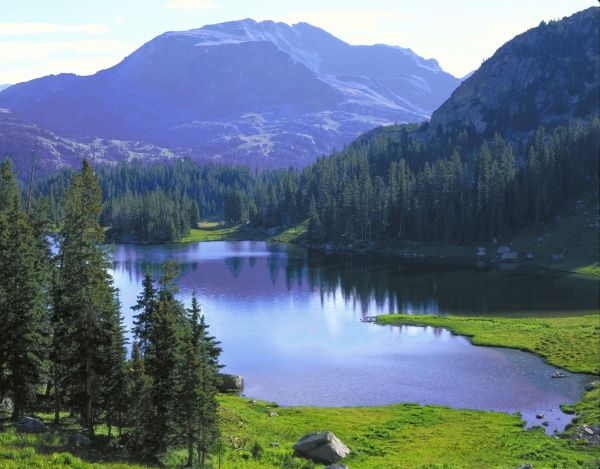 Rocky Mountain National ParkPhoto: John Fielder
Rocky Mountain National ParkPhoto: John Fielder
On the heels of The National Parks: America’s Best Idea, filmmaker Ken Burns’ new six-part love letter, comes National Parks in Peril [PDF], a sobering report released on Thursday by the Natural Resources Defense Council (NRDC) and the Rocky Mountain Climate Organization (RMCO). The 25 most endangered parks are being threatened by dramatic declines in snow and water, by rising seas, extreme weather, the disappearance of native plants and wildlife, and by the onslaught of nonstop, human-generated pollution. The changes have already begun.
Warmer temperatures have killed as many as 90 percent of the pinon pines in Colorado’s Mesa Verde National Park. Grizzly bear birth rates are in decline in Yellowstone National Park along with the whitebark pine tree, which is being threatened by infestations of mountain pine beetle.
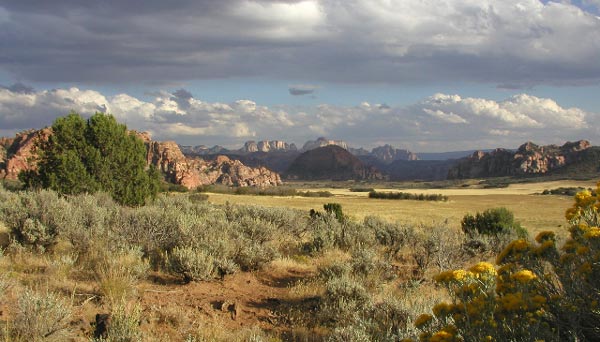 Zion National ParkPhoto: National Parks ServiceAccording to the report, “Climate change from human activity is the leading threat to wildlife, plants, water and ice in 25 of America ’s national parks.” From Denali in Alaska to the Florida Everglades, the 25 most at-risk parks span 22 states. Taken together, they represent many of America’s most majestic and wondrous natural landscapes.
Zion National ParkPhoto: National Parks ServiceAccording to the report, “Climate change from human activity is the leading threat to wildlife, plants, water and ice in 25 of America ’s national parks.” From Denali in Alaska to the Florida Everglades, the 25 most at-risk parks span 22 states. Taken together, they represent many of America’s most majestic and wondrous natural landscapes.
The report warns that unless we can get our arms around the problem of climate change, namesake features will begin to vanish from our national parks – and soon. No more glaciers in Glacier National Park. No more Joshua trees in Joshua Tree National Monument. Some coastal parks – the Everglades and New York ’s Ellis Island are but two — will be completely submerged. And all of this could happen within the next 20 years.
Climate change “is the greatest threat that parks have ever faced,” said Stephen Saunders, President of the Rocky Mountain Climate Organization, former deputy director of the National Park Service and one of the report’s authors. “We’ve never lost a national park before, and for the first time we‘re in danger of losing one.”
National Parks In Peril offers 32 recommendations for saving America’s 331 parks. They include hastening “the development and deployment of clean technologies,” and urging National Park Service officials to “speak out publicly about how climate change and its impacts threaten national parks and the broader ecosystems on which they depend.”
At the press conference following the release of National Parks in Peril, the report’s sponsors were asked whether there is someone, anyone alive today who is advocating for the national parks as passionately and eloquently as John Muir, the legendary naturalist and writer who emerged as the star of Ken Burns’ new documentary series.
“There isn’t,” said Theo Spencer, senior advocate at the NRDC’s Climate Center. “John Muir and others helped prod congress and the president into creating these parks”.There was resistance at the time, from people who wanted to mine or log develop the land. But there were also leaders – former president Teddy Roosevelt among them – who recognized that preserving America’s scenic wonders for future generations was more important than financial gain.
“We seem to have lost sight of those kinds of priorities,” said Theo Spencer. “There hasn’t been a voice like John Muir. There hasn’t been a champion like Theodore Roosevelt. This really is a nonpartisan issue and it desperately needs the type of leadership that was shown at the time these parks were created.”
National Parks In Peril is an attempt to call attention to the dangers that threaten America’s parks and to rouse the leaders who can help save them.
